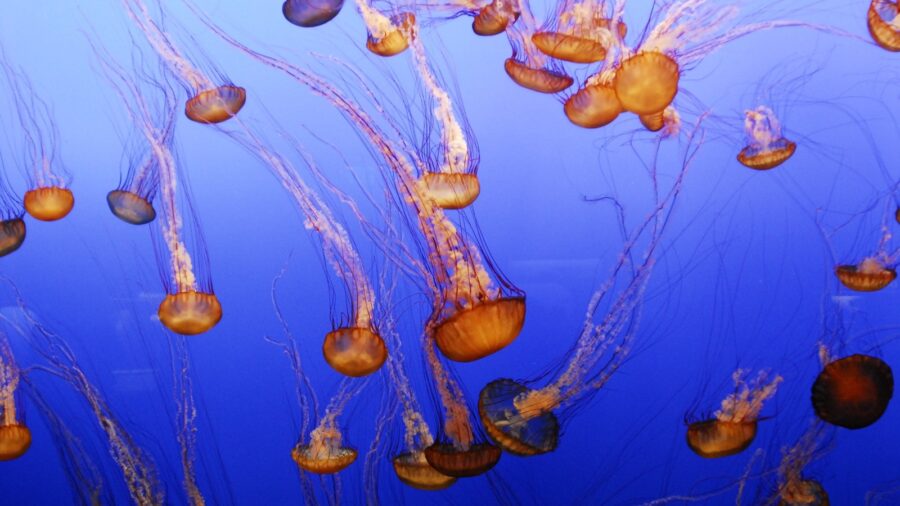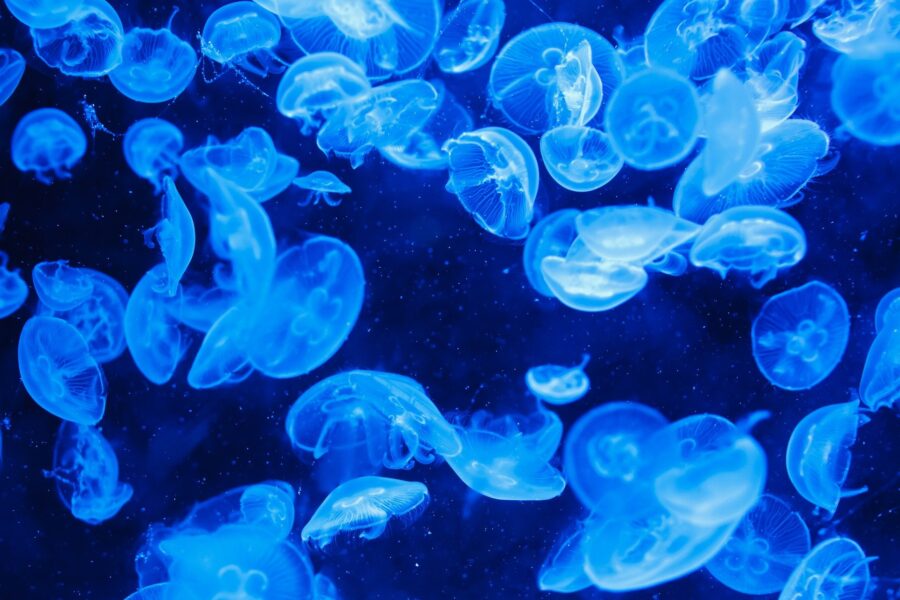See The Massive Swarm Of Jellyfish Taking Over A Popular Beach
Swarms of jellyfish are taking over a popular beach.
This article is more than 2 years old

For years now, activists and many world leaders have been bashing their heads over the drastic climatic changes and their dangerous after-effects, while warning the masses to put a stopper on their inclination to cause various types of pollution without sparing a single thought to the well-being of the environment. But, every now and then, nature makes it a point to remind humans that all their actions have consequences, with the latest reminder being a massive swarm of jellyfish that washed up on the shores of Crimea which has effectively postponed any potential tourist activities.
It has been reported that thousands of jellyfish were seen on the Crimea shores, especially on the Azov sea coast which is famous for attracting flocks of tourists wanting to enjoy its warm waters as summer ends. But obviously, all these plans are now out of the window as the majority of the tourists are finding it hard to step into the jellyfish-infested waters. While these jellyfish are not dangerous and don’t cause any fatal injuries, locals, as well as tourists, have decided to forego their plans of swimming in the water as it’s now a “jellyfish soup” that can cause severe burns (the jellyfish do sting, after all).
Normally, the number of jellyfish near the Crimean shores does go up during the summers, especially in August. But in the last few years, their population has doubled and tripled exponentially because of the steadily increasing salinity in the Azov sea. Russian Institute of South Sea Biology researcher Sergei Alyomov has explained in a chat with Reuters that another reason for the rise in the number of jellyfish is the warm and dry weather in the area that hasn’t fluctuated much in the last few years because of global warming. This in turn lessens the usual amount of freshwater transport from the rivers to the sea, thus making the water even saltier. The Azov seawater which already is a hot breeding ground for the sea creatures has now become their perfect environment because of its increasing saltiness that will ensure that their population climbs even higher.
According to Edip Yüksel, a Kurdish American activist, this unregulated growth in the number of jellyfish, which he thinks is in the millions, is because of “wild capitalism, consumerism, and the so-called free (unregulated) market.” Unfortunately, this is not the first time that jellyfish have invaded the shores of Crimea. In December 2019, as reported by Ukraine Today, a similar incident occurred, though the number of these sea creatures was considerably smaller

At the time, swarms of jellyfish invaded a bay in the Black Sea. They were recognized as the species Aurelia and while they usually frequent the area from March to July, the high number of jellyfish present during winter was unexpected. Just like the current flood of the creatures, the 2019 incident also effectively shunned off any potential tourists.
Anyway, all you can do for now, if you are in Shcolkine village and planning a dip in the Azov Sea, is to evaluate in advance if the swarms of jellyfish crowding its surface are something you are comfortable with. If not, it is time to seek a new location for your plans.












